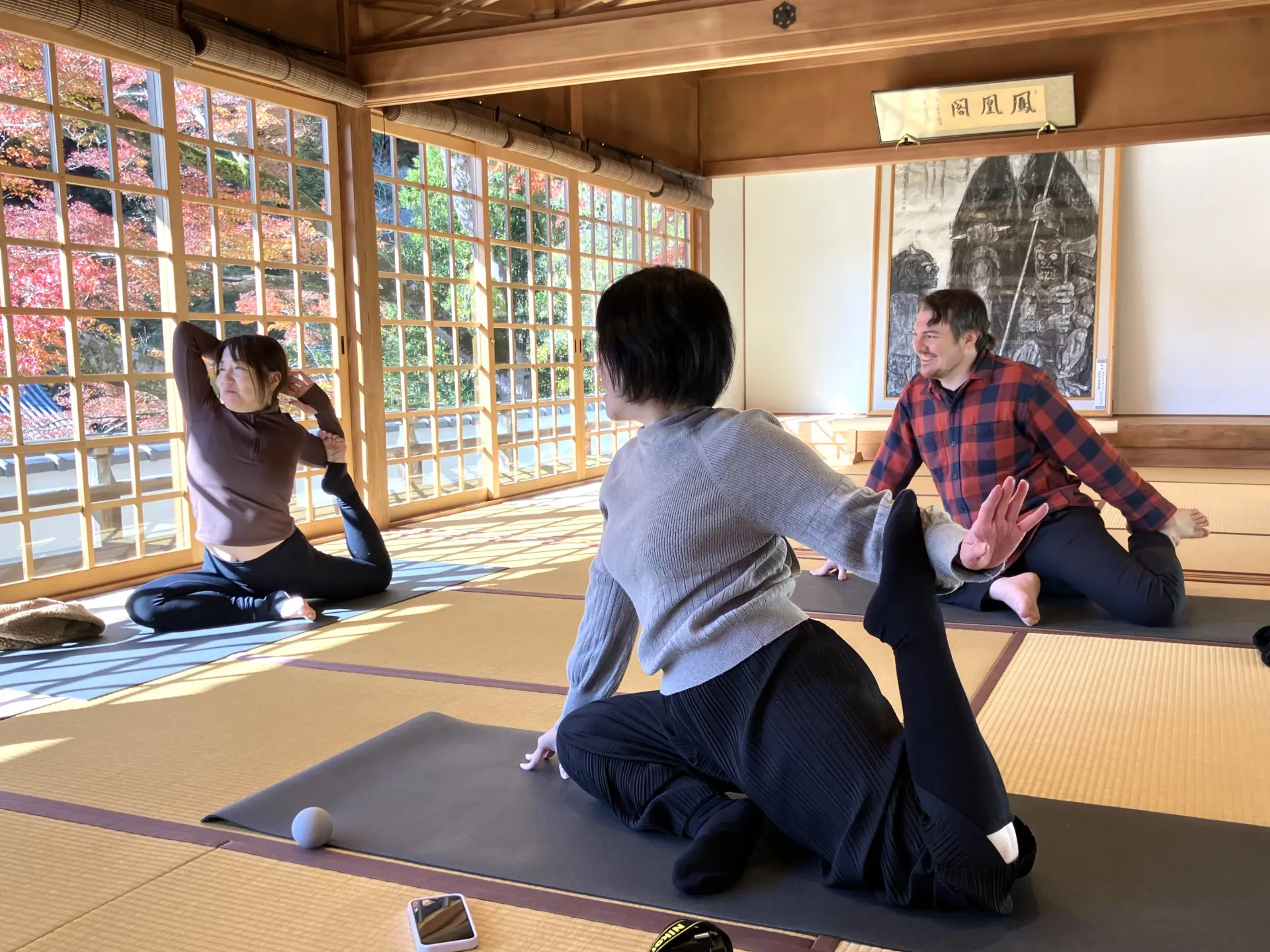
Retreat to a different side of Kansai: a 3-day journey to discover the origins of food and the natural rejuvenation in Osaka, Hyogo, and Tokushima
Last update
Would you like to experience ultimate healing that nourishes both your mind and body, while immersing yourself in Japan's unique culture? We recommend a course that offers both a valuable, delicious culinary experience as well as a retreat that refreshes your entire being.
While many visitors restrict themselves to the larger cities in search of discovering culture and the “must see” destinations, the surrounding areas are filled with hidden gems that deserve spots in your itinerary. There is a slower pace of life and travel in these quaint locations, allowing visitors to leisurely enjoy breathtaking scenery, delve into rich local history, sample the local food culture, all while rejuvenating the body and mind.
We embarked on a three-day retreat and toured through some of the best experiences between the Osaka, Hyogo, and Tokushima prefectures. Please join us as we recount the charms of this region and consider taking a more scenic and memorable route through Japan.
Day 1
Minoh Park Yoga and Minoh Falls Experience (Minoh city, Osaka prefecture)
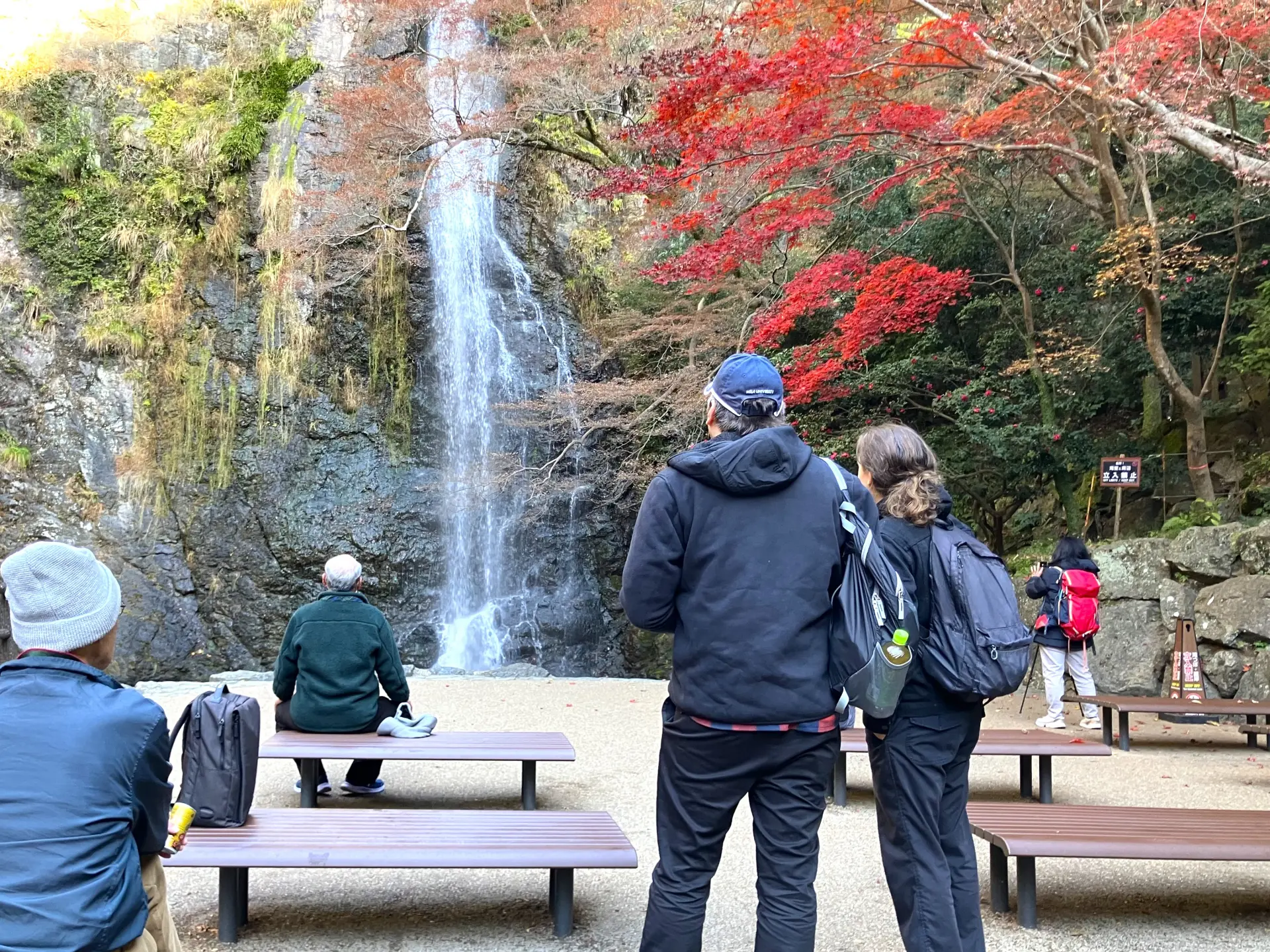
We began our journey in the tranquil Hokusetsu area in northern Osaka, known for its serene nature. Minoh Falls is a famous destination in the area and one that no one should miss when visiting this breathtaking, 33-meter waterfall is considered one of the top 100 in Japan and is especially picturesque in the fall season when the surrounding foliage fades into shades of red and gold. If you're lucky, you might even see wild Japanese macaques playing nearby.
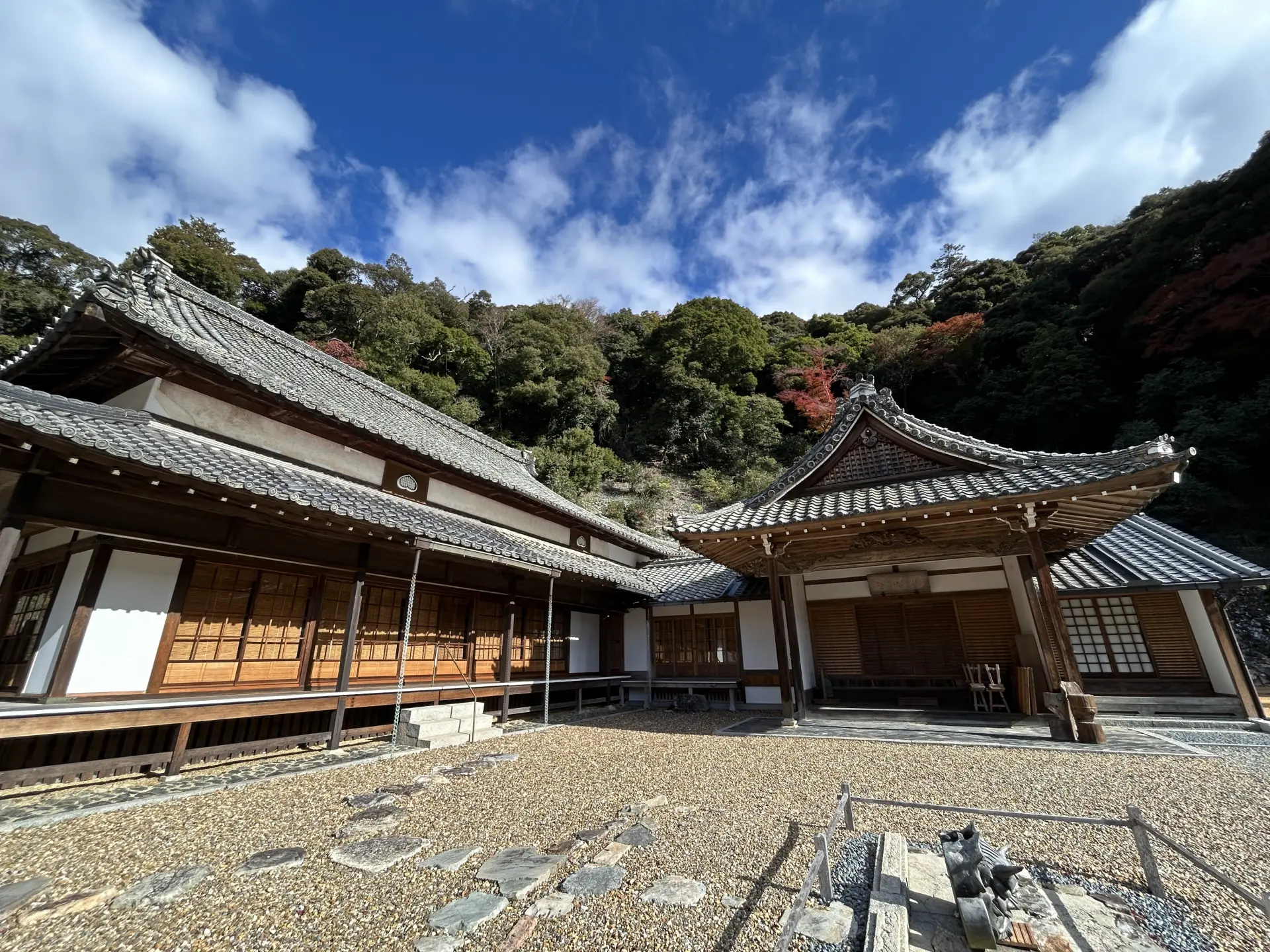
We proceeded to the expansive Ryuanji Temple area as we enjoyed its amazing landscape. As we explored the temple grounds, the guide explained the fascinating history of this significant place, stretching back to the 7th century origins of Buddhism in Japan and has links to the Japanese Imperial Family.
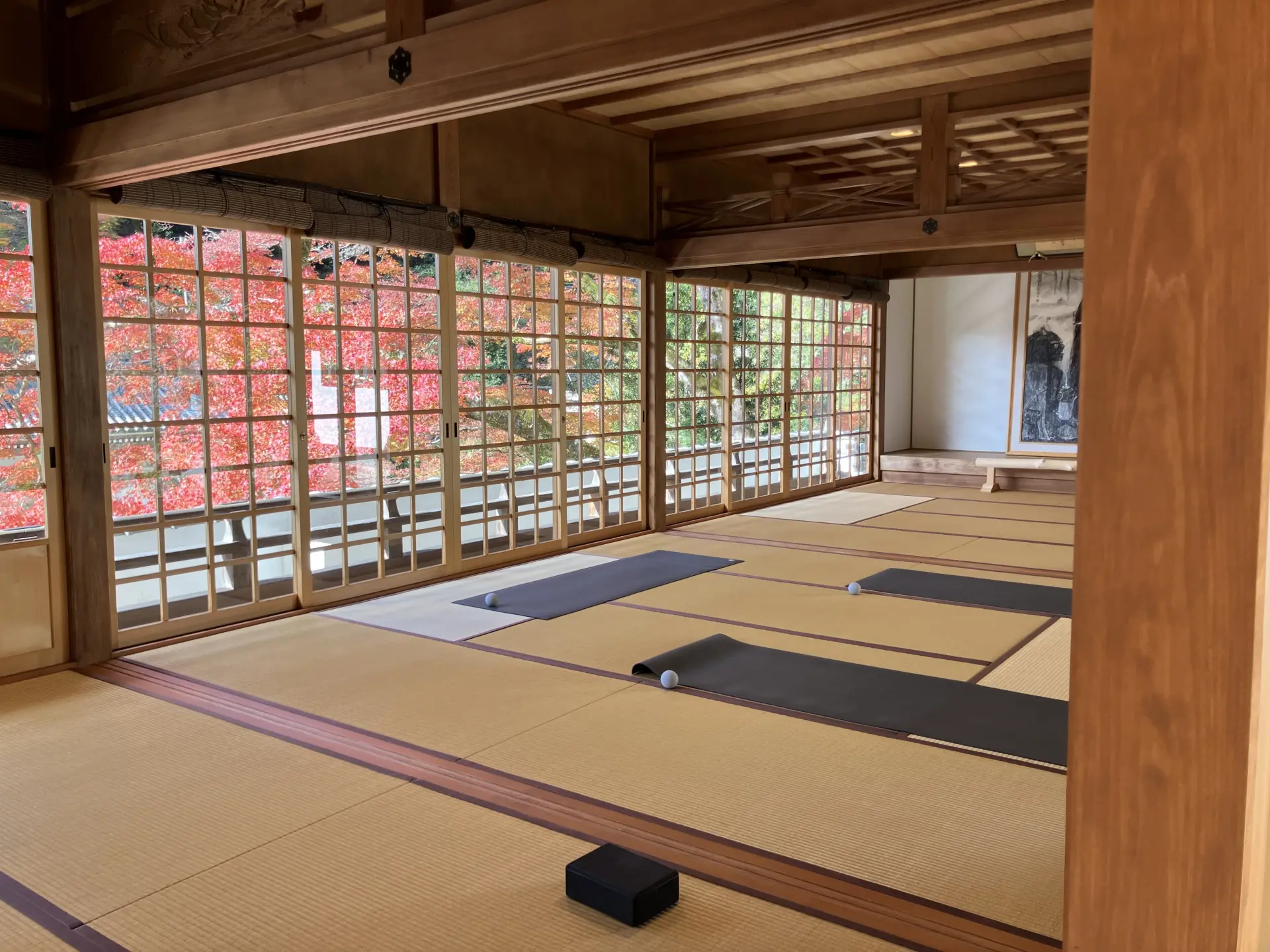
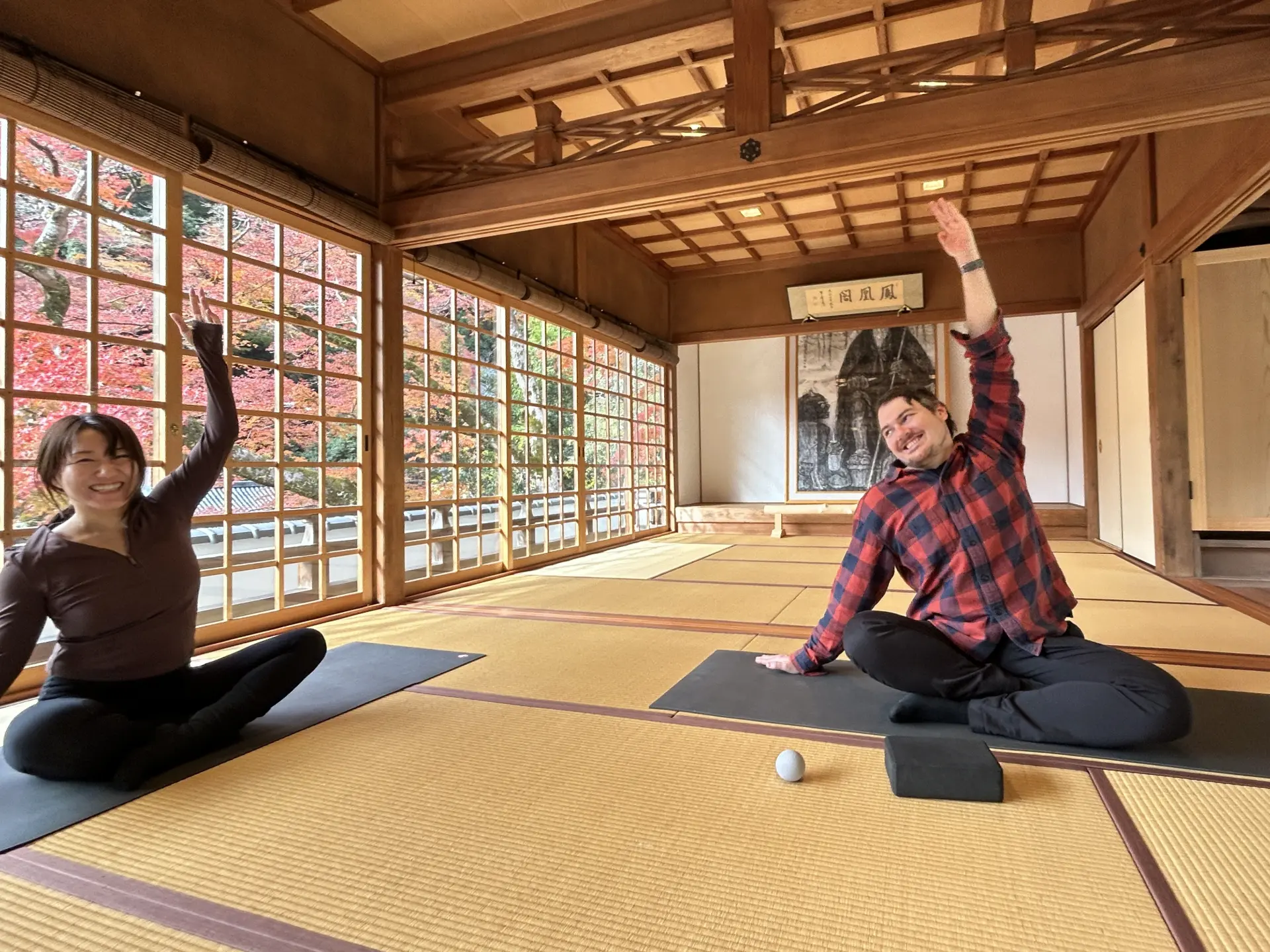
The highlight of this section was experiencing a 2-hour yoga session led by a skilled instructor in an exclusive room not typically open to the public, surrounded by the vibrant red maple leaves under the autumn foliage. This exercise was both invigorating and relaxing, and prepared us well for the coming days of activities.
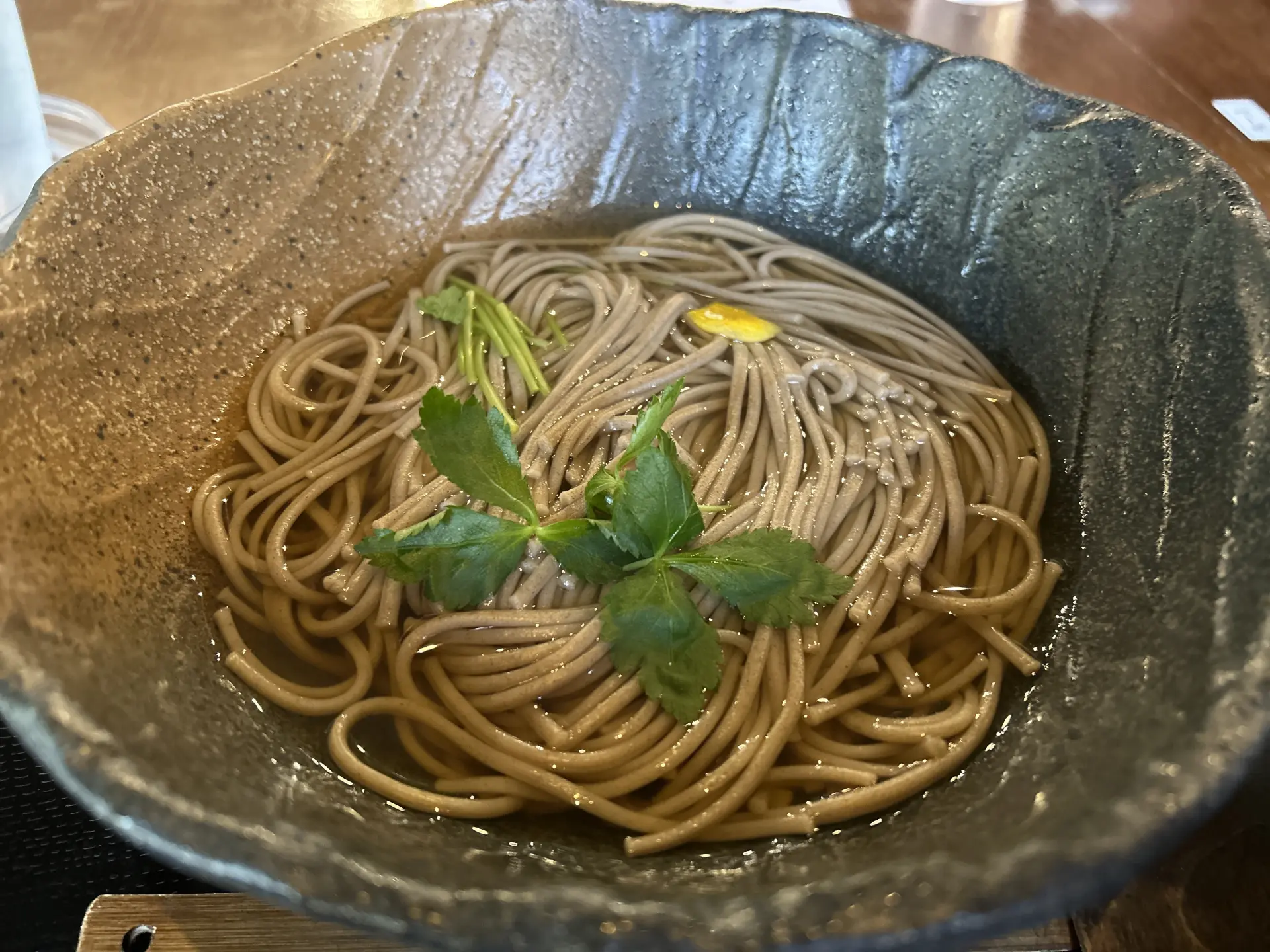
Our relaxation continued into our lunch at the nearby Kajikasou soba restaurant which specializes in delicious soba buckwheat noodles,a range of local specialties from the Minoh area, and charming service. I found their hot Minoh Soba with local Yuzu citrus to be a refreshing and warming meal, and to serve as a fitting end to our relaxing morning in Minoh.
Nishiyama Brewing (Tanba city, Hyogo Prefecture)
Our next destination lied in eastern Hyogo, a region called “Tamba” which is celebrated for its high-quality agricultural products such as black beans and rice. We were able to see the results of their agricultural prowess at our first stop, the Nishiyama Brewing sake distillery, in which we were provided a tour of the facilities and treated to a tasting of their award-winning Japanese sake.
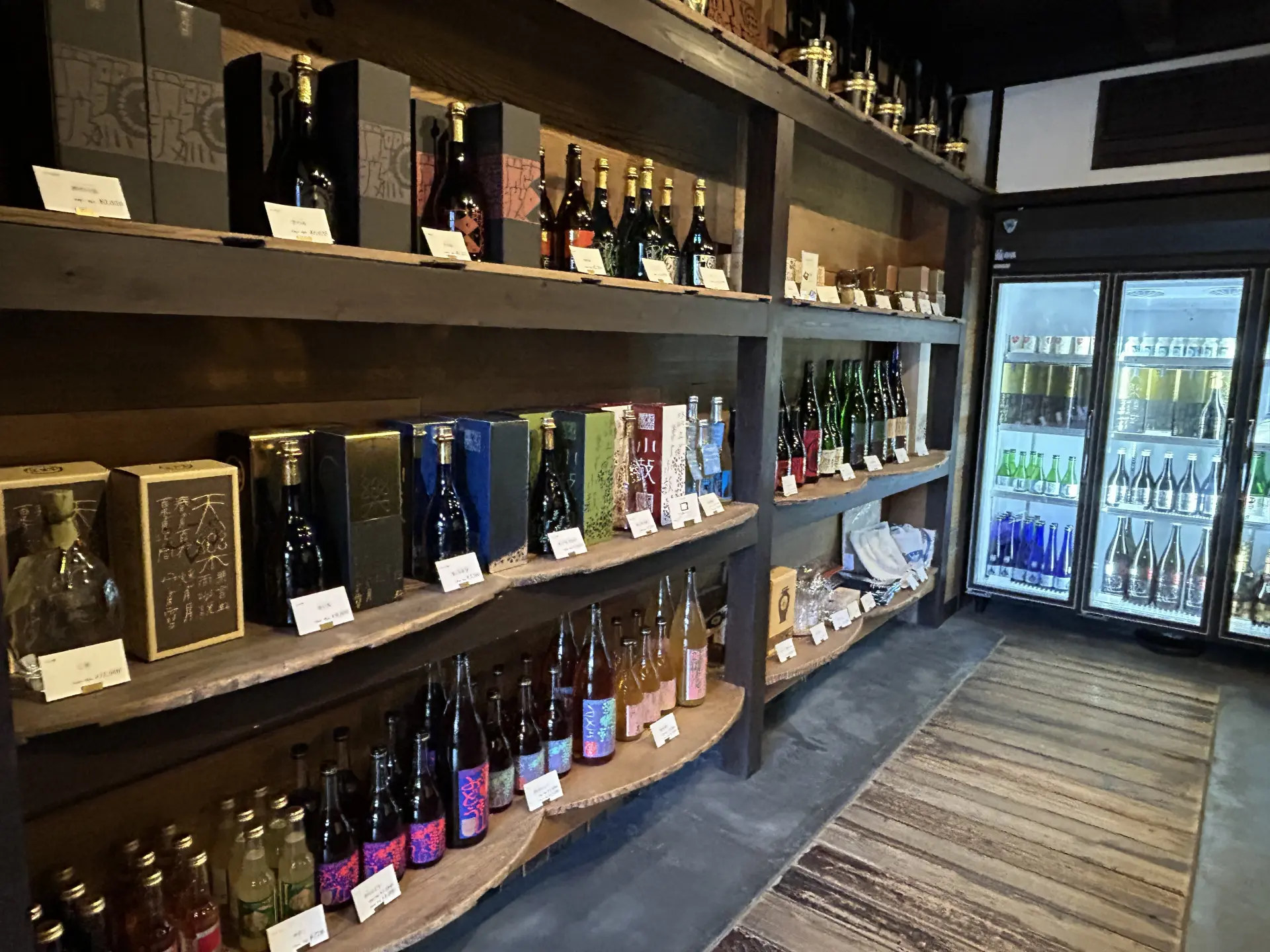
Traditional sake production was formally recognized by UNESCO as an Intangible Cultural Heritage in December 2024, reflecting its depth of history integrated into each step of the process. Nishiyama Brewing has roots extending back to the late Edo period around 175 years ago and remains a business to this day - an inspiring example of how this cultural heritage is preserved with pride. Inside the sake brewery, there is also a gallery called “Tsudzumi Kairou” in the renovated wooden warehouse called “Koden,” where you can view historical items like calligraphy, paintings, and photographs which have been passed down through generations.
The charm of Nishiyama Sake Brewery lies in its efforts to preserve traditional sake brewing for future generations, offering a variety of experiences for travelers. In addition to sake tastings, visitors can do workshops learning about fermentation, health-conscious fermented cuisine, afternoon tea, and even stay in the brewery's historic facilities, limited to one couple a day.

The tour culminated in a tasting of Nishiyama’s famous sake, which included useful tasting notes (provided in Japanese and English) which would allow even a sake tasting beginner to understand and appreciate the unique characteristics of each individual variety.
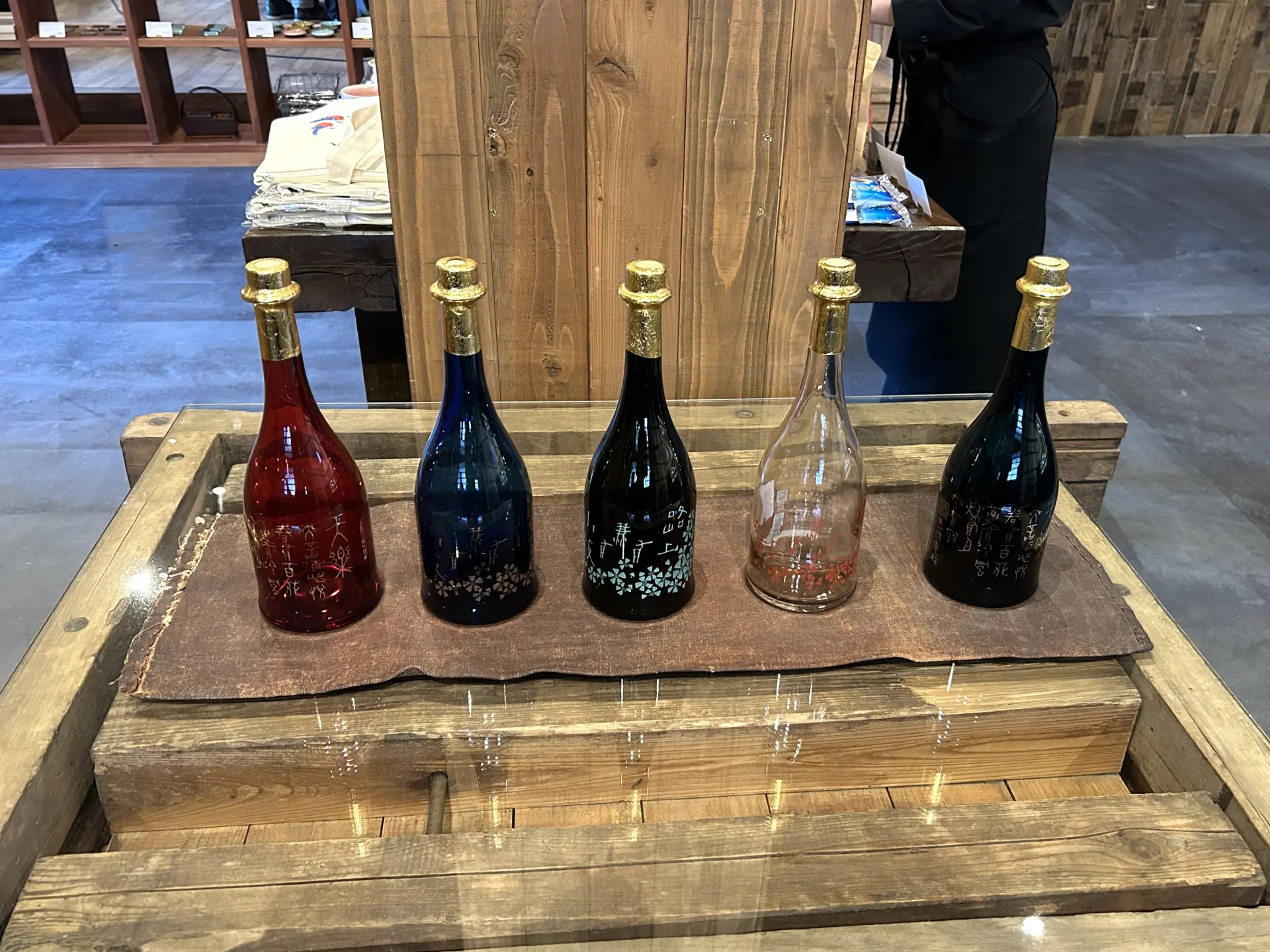
Sasayama Castle Town Hotels NIPPONIA (Tanba-Sasayama city, Hyogo Prefecture)
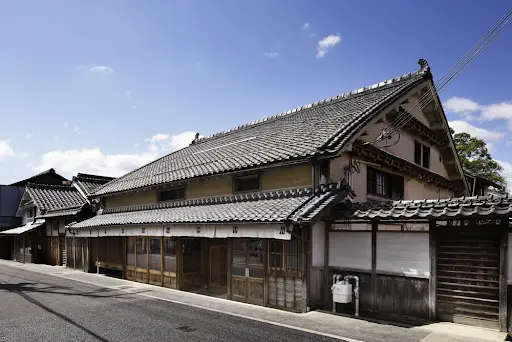
We concluded our first day at Sasayama Castle Town Hotels NIPPONIA, a boutique installment of the famous Nipponia hotel brand known for restoring historic buildings into unique accommodations that seamlessly blend traditional heritage with modern comfort and amenities. In Sasayama, Nipponia boasts accommodation across several restored buildings, each uniquely offering a window into Sasayama’s rich past while providing the comforts of a modern luxury hotel.
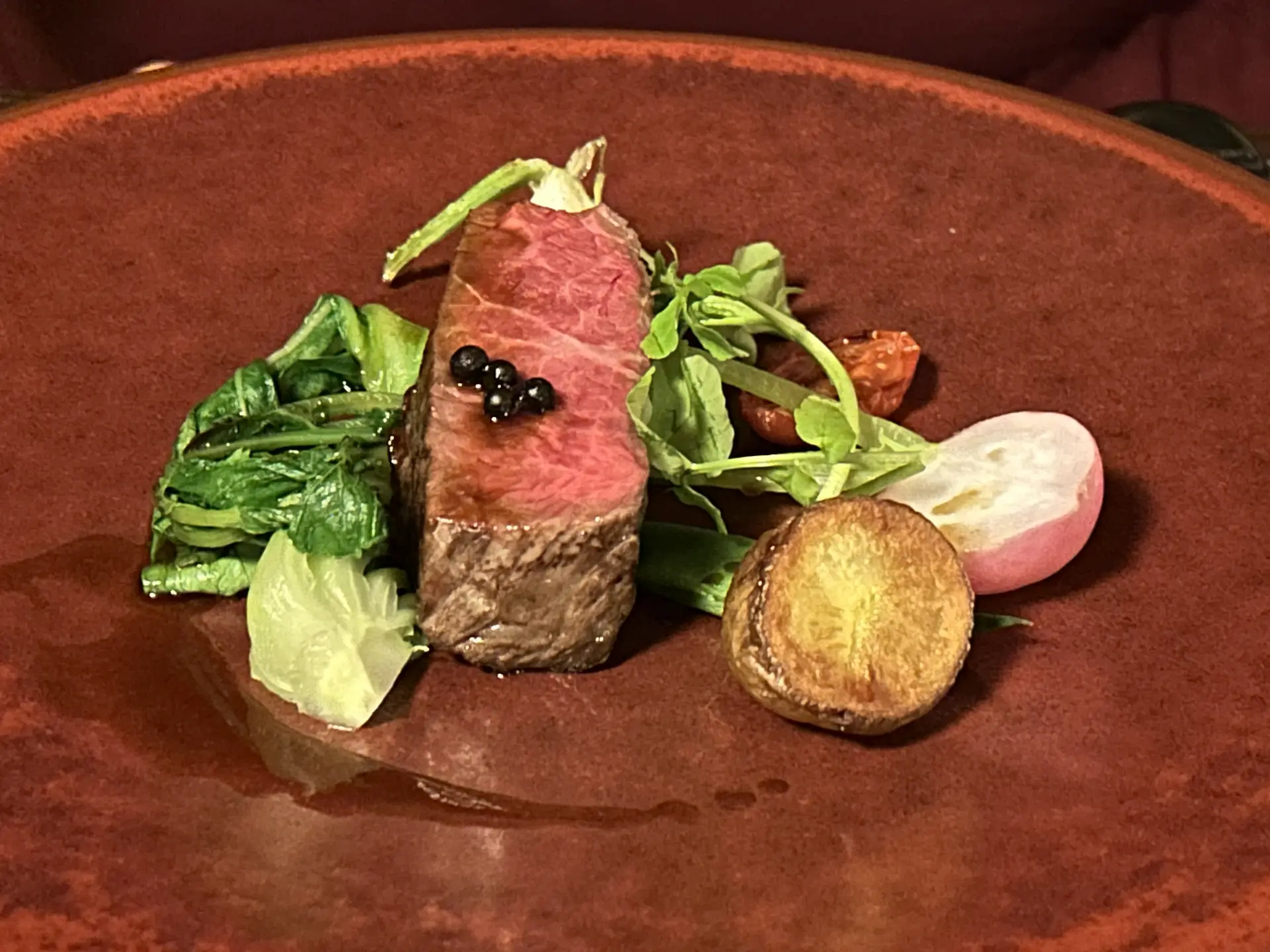
The restaurant is located in the Onae building, where a luxurious 7 course dinner was served. The meal was made with abundant local, seasonal ingredients, incorporating regional produce creatively styled into French cuisine, and paired with local sake, beer, and a variety of non-alcoholic options. Every plate looked like a work of art and was a testament to the region’s culinary history, presented with the care that Japanese cuisine is renowned for. Highlights included the grilled local Tajima Beef served with seasonal vegetables, and the Tamba beer which included distinguished notes of local black beans.
Sleeping in this heritage-rich building, surrounded by the history of Sasayama, was the perfect end to our first day of our course.
Day 2
Sasayama Castle Town Walking Tour (Tanba-Sasayama city, Hyogo Prefecture)
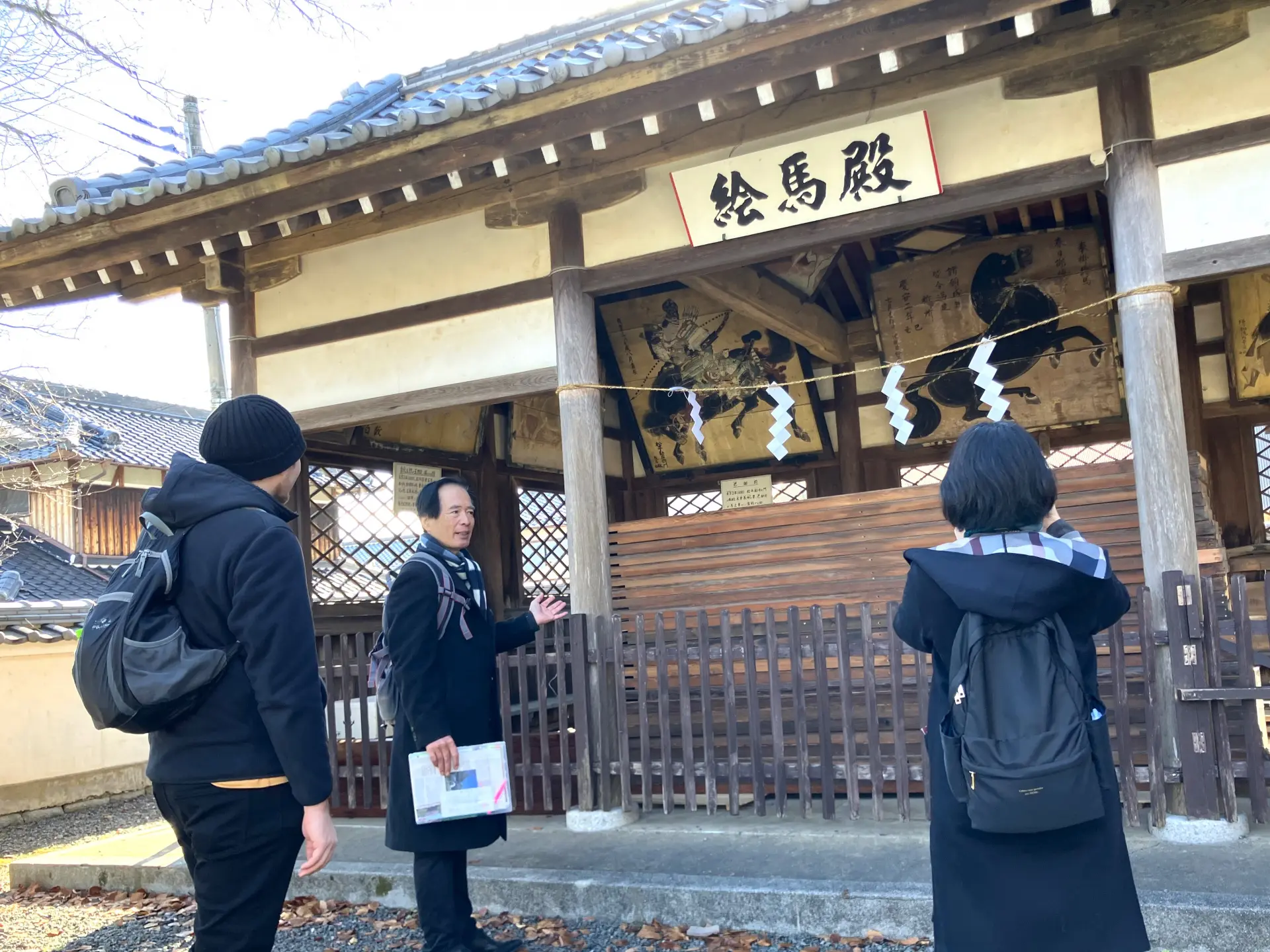
We began our day in the peaceful Sasayama Castle Town being met by a local with an extensive understanding of the history of the area, who led us through well-preserved streets and historic architecture which characterize this historic town. As we wandered, we were directed to humble stores which sold a variety of historic treasures from Showa-era (1926-1989) toy stores to a fabric store which sells historic cloth, including Edo-era (1603-1868) pieces. We were also guided to the local Kasuga Shrine, which has existed alongside the historic Sasayama Castle since the 17th century. This stroll really gives the feeling of stepping back in time.
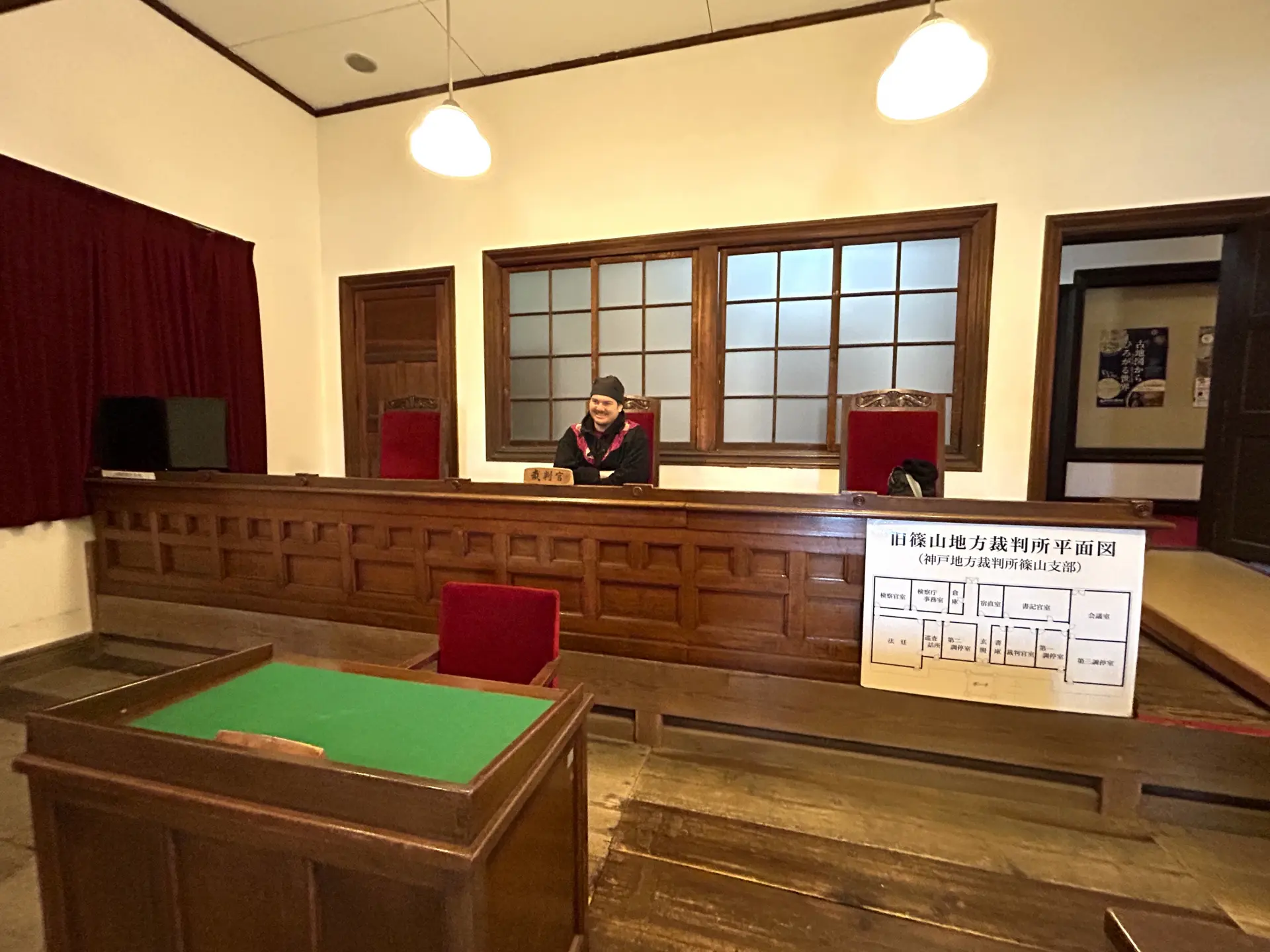
At the Tamba Sasayama City Museum of History and Art offers an even more in depth look at the area. The museum building itself is representative of the longstanding history of the town being a Meiji-era (1868-1912) courthouse with well-preserved courtrooms. Also on display were historic pottery pieces “Ojiyama-Yaki”, rare tools like cards and mirrors, and preserved scrolls and maps, all an amazing showcase of the rich culture which developed around Sasayama Castle.
Tojo Akitsu Gama (Kato city, Hyogo Prefecture)
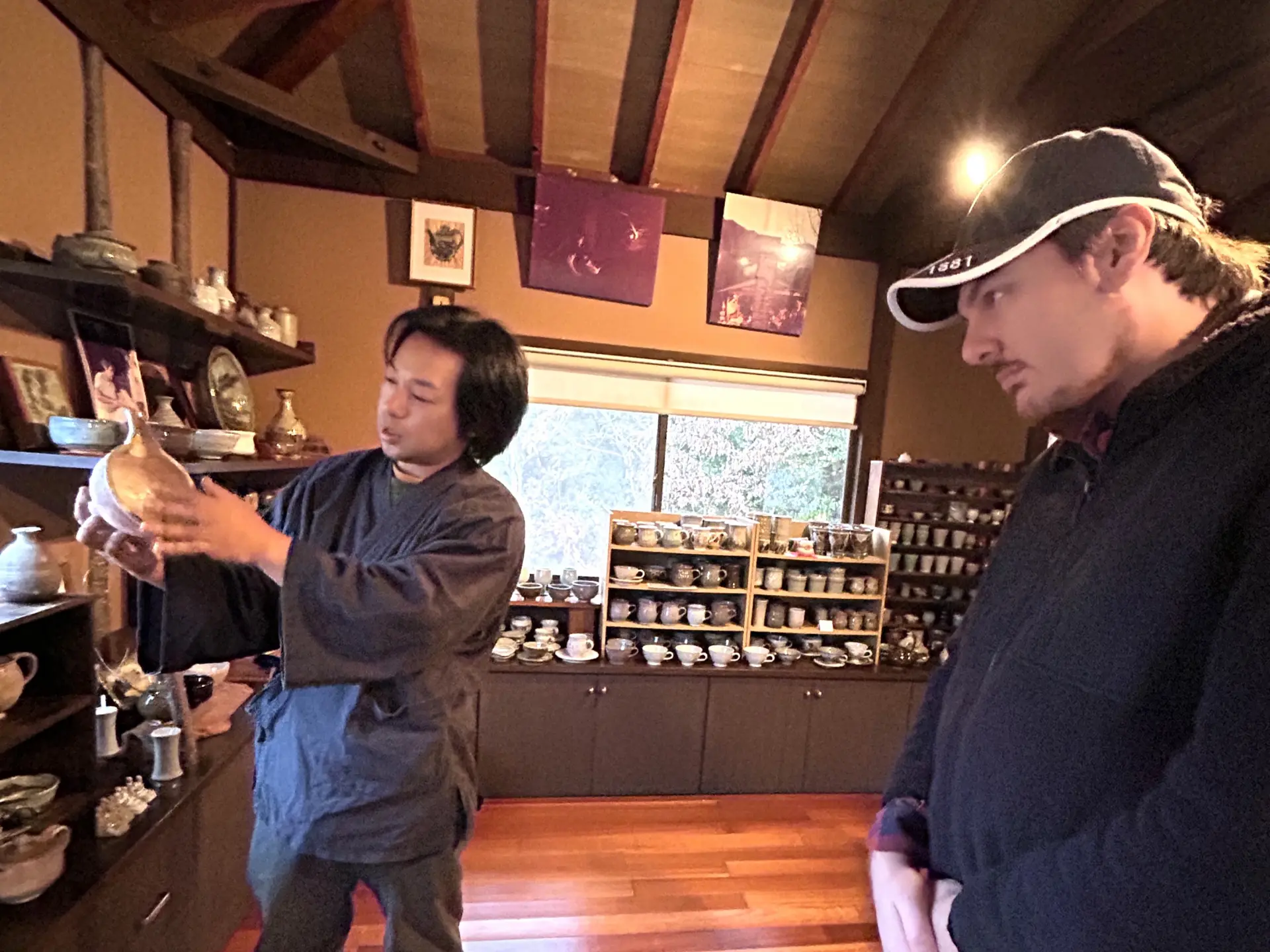
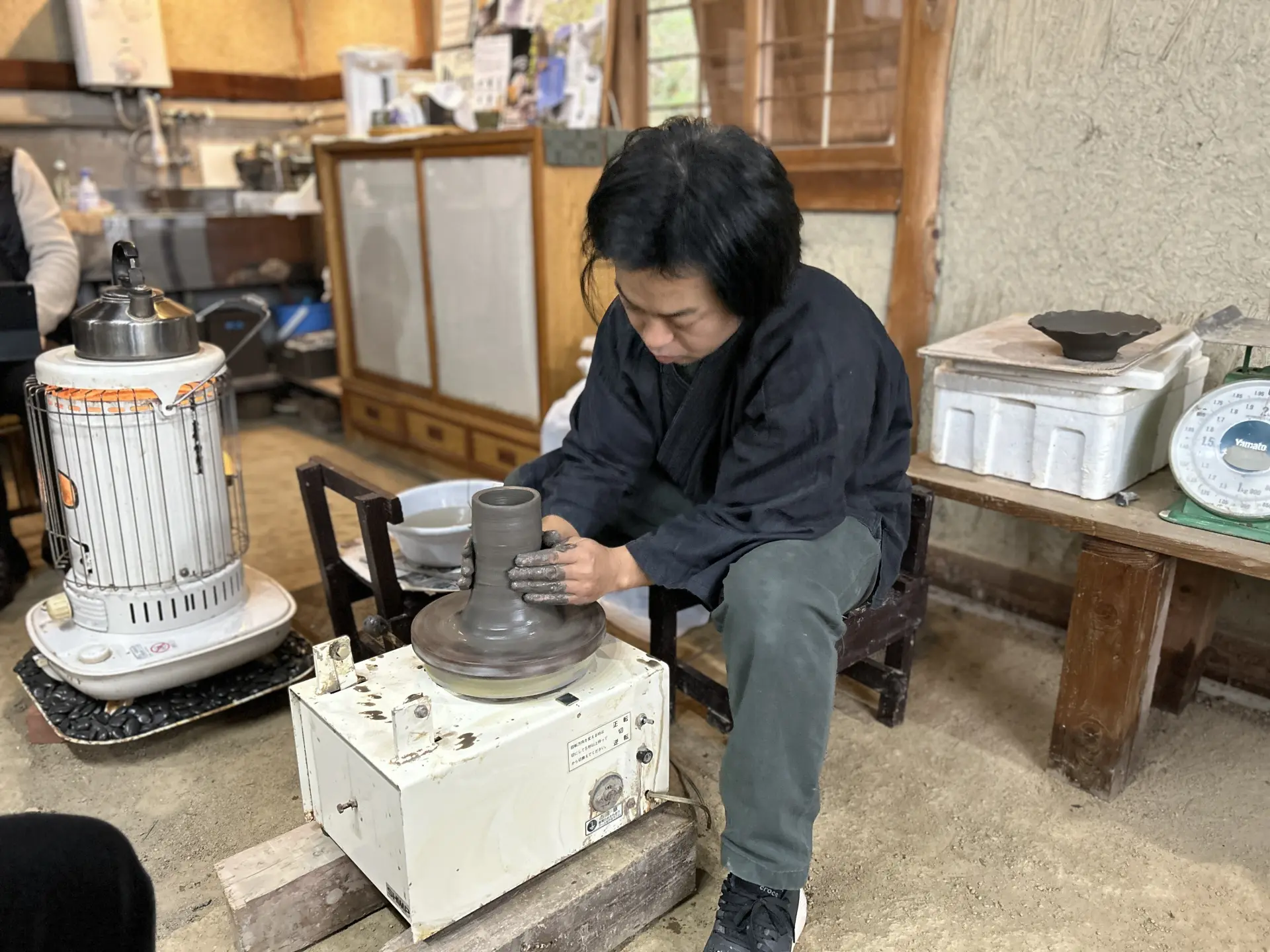
So far on this journey we have enjoyed the produce of local specialties from various regions, primarily with our taste buds. However, the application of these historic industries extends well beyond the epicurean. We witnessed this on the next stop of our tour, Tojo Akitsu Gama, known for its Yamadanishi Sakeware. Tojo Akitsu Gama is located in the Tojo Akitsu region of Hyogo and is known as the birthplace of "Yamada Nishiki," a high-quality ingredient for sake. At Tojo Akitsu Kiln, two artisan brothers continue to preserve traditional pottery techniques while integrating the unique characteristics of the area. They are known for creating sake vessels and pottery products that incorporate local materials.

A unique aspect of this business is the partnership with local rice farmers, through which rice straw and soil are sourced and then integrated into the clay and glaze used for artisanal sake drinkware and other pottery goods. The unique characteristics of these components result in a distinctive, monochromatic glazing where deep ash blacks meet cloudy whites - a color pallet evocative of a Japanese winter landscape, and of the long history of rich cultivation in the area.
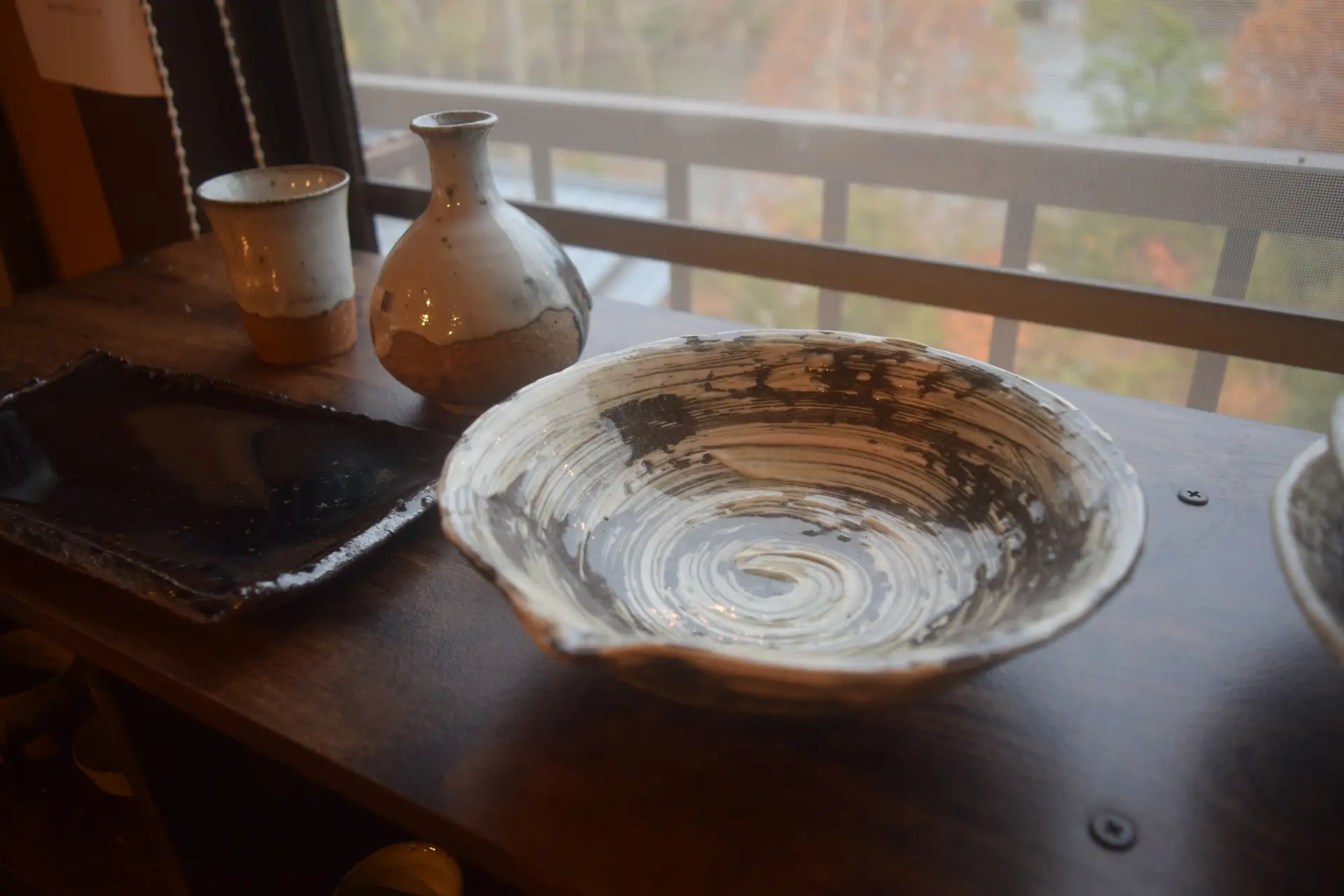
We participated in a hands-on experience in creating our own sake drinkware at the family home, guided by one of the potters. We would be shaping our own drinkware using their distinctive clay, allowing us to produce a cup containing the very soil from the crops the region is famous for. During the experience, you will learn the techniques and delicate hand movements needed to craft the vessels, creating your own sake drinkware. Once you choose the finishing color, the experience concludes. The firing is done by the artisans.The finished items will be arranged for shipment to your home.
Zenbo Seinei (Awaji city, Hyogo Prefecture)
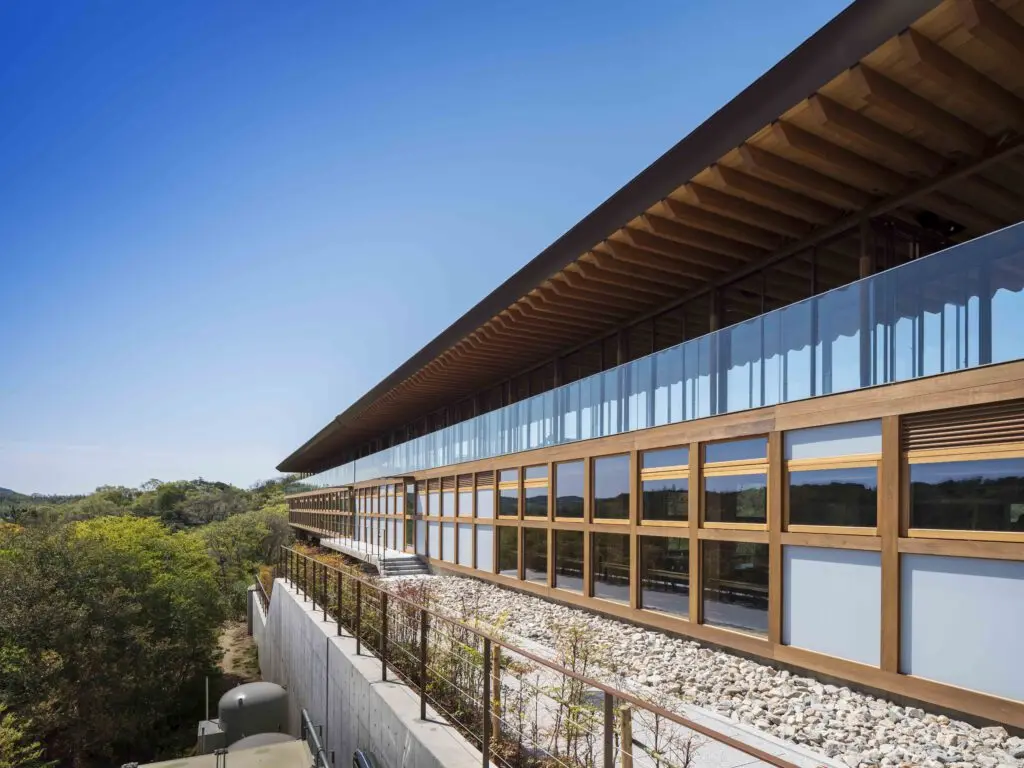
Relaxation and accommodation does not get much better than what is offered at Zenbo Seinei, a serene Zen retreat situated amongst the calm hills of Awaji Island. Upon approaching the entrance, we were struck by the panoramic views of Awaji’s lush greenery and fall foliage which surround the tranquil wooden structure. The exterior of the magnificent wooden building, perched solitarily on the hill, was overwhelming and staying here offers luxury and mindfulness.
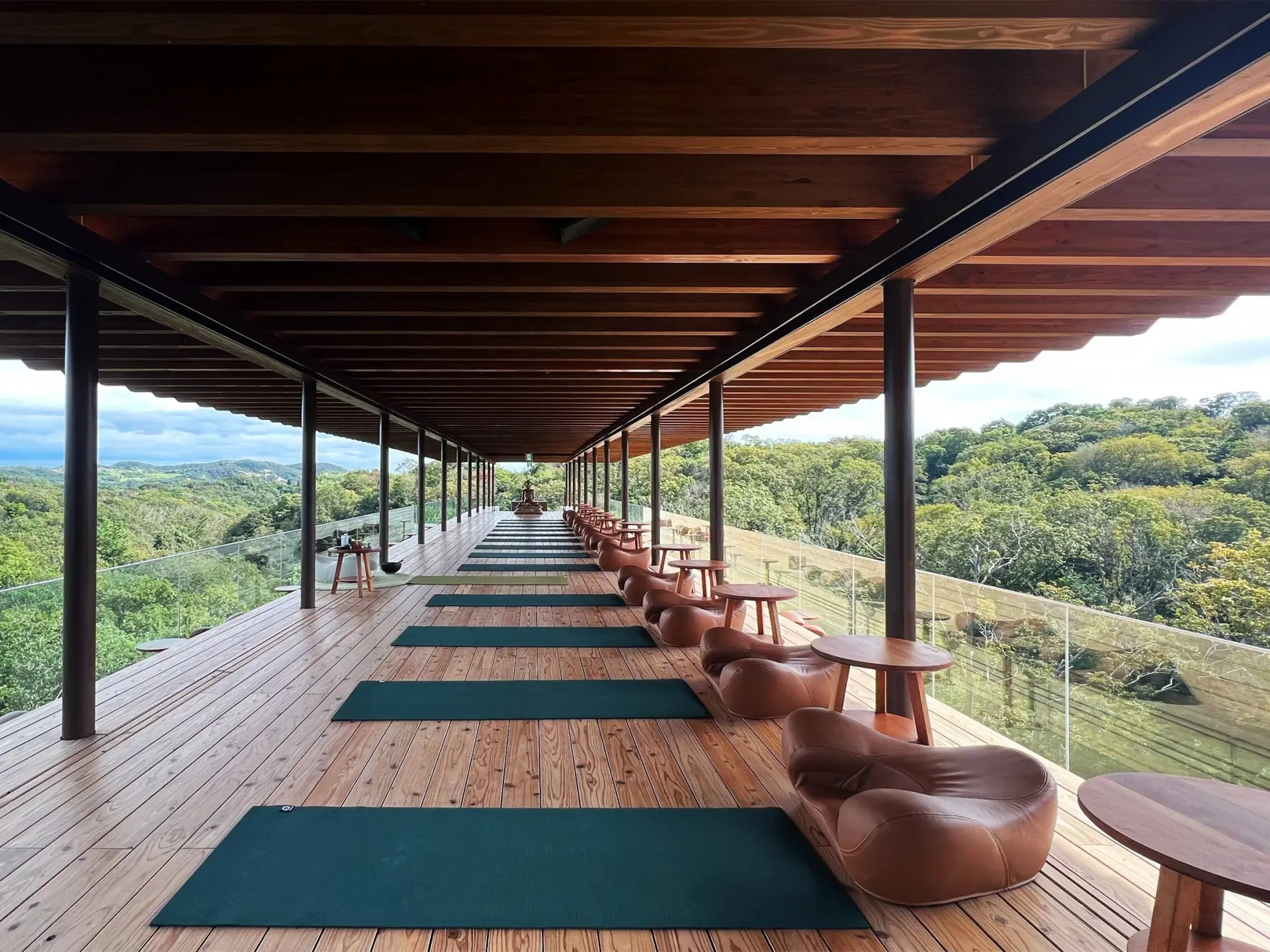
Our relaxation began as soon as we entered when we were seated and provided a welcome tea to enjoy as the day’s program was explained to us. As we walked through the building’s facilities, the dedication to the calming Zen design was consistent throughout the building. The structure is more than 80% wood, and the pleasant aroma complements the calming atmosphere. Room furnishings are comfortable yet minimalist, and electronic distractions such as televisions were absent, ensuring that guests can instead focus on activities such as calligraphy to embellish the theme of mindfulness.
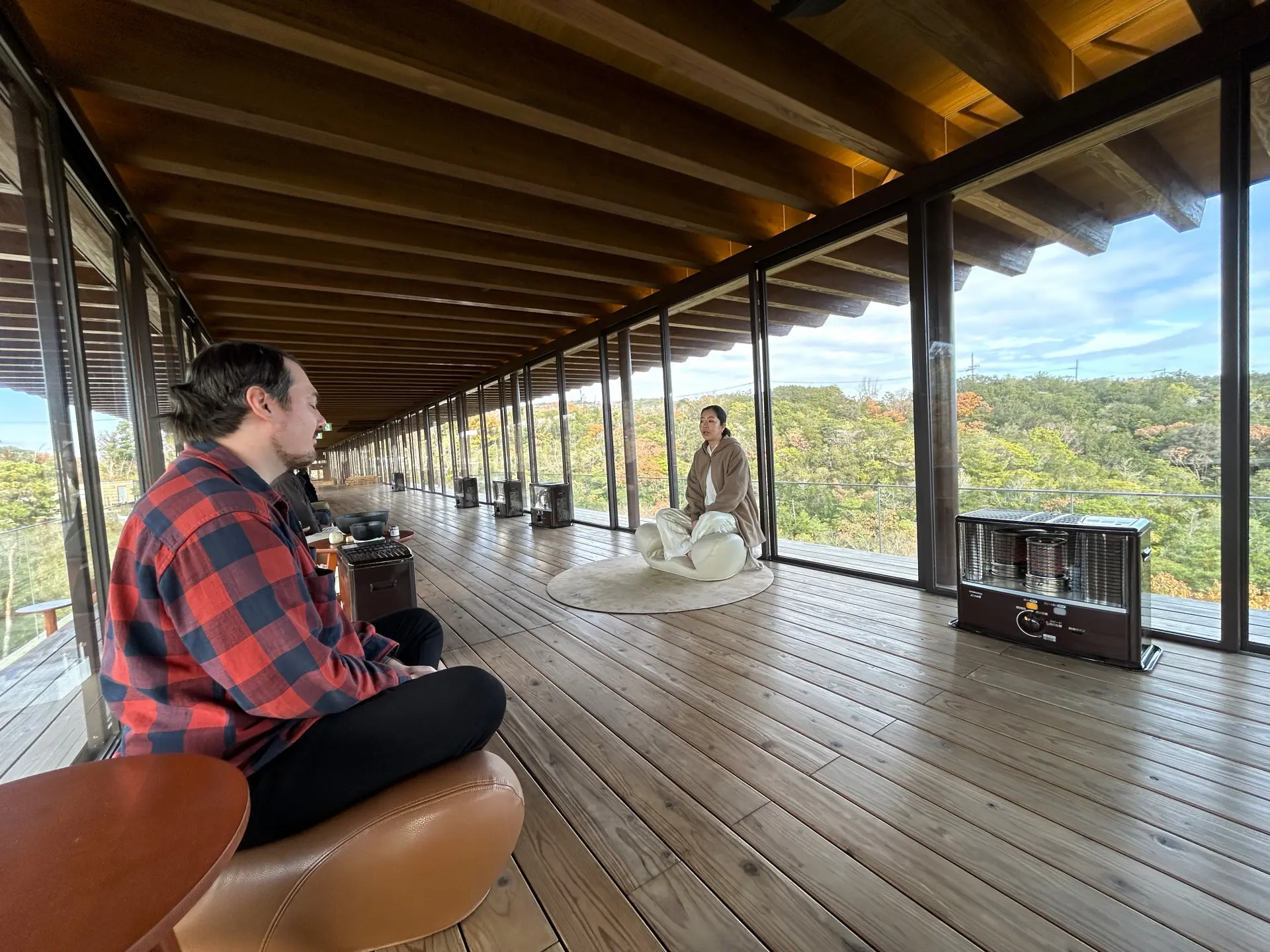
The Zen Deck features rows of simple Zen meditation cushions, allowing for calm contemplation while observing the scenery. It was here where our wellness session for the day would be held, which included both a guided meditation and a yoga session. As we progressed through the exercises under the cool Awaji air, I felt a calming peace envelop my mind as my attention and focus shifted to enjoying this serene moment in such a special place.
After the Zen wellness session I enjoyed the Zenbo cuisine on offer, which is notable for containing no animal products, added sugars, wheat flour, oil or artificial flavoring - instead relying on the fresh flavors of the ingredients to create a meal which both tastes and presents beautifully. Most impressive was the vegetable sushi: a selection of various vegetables, mushrooms and herbs which is presented like a fine omakase sushi set.
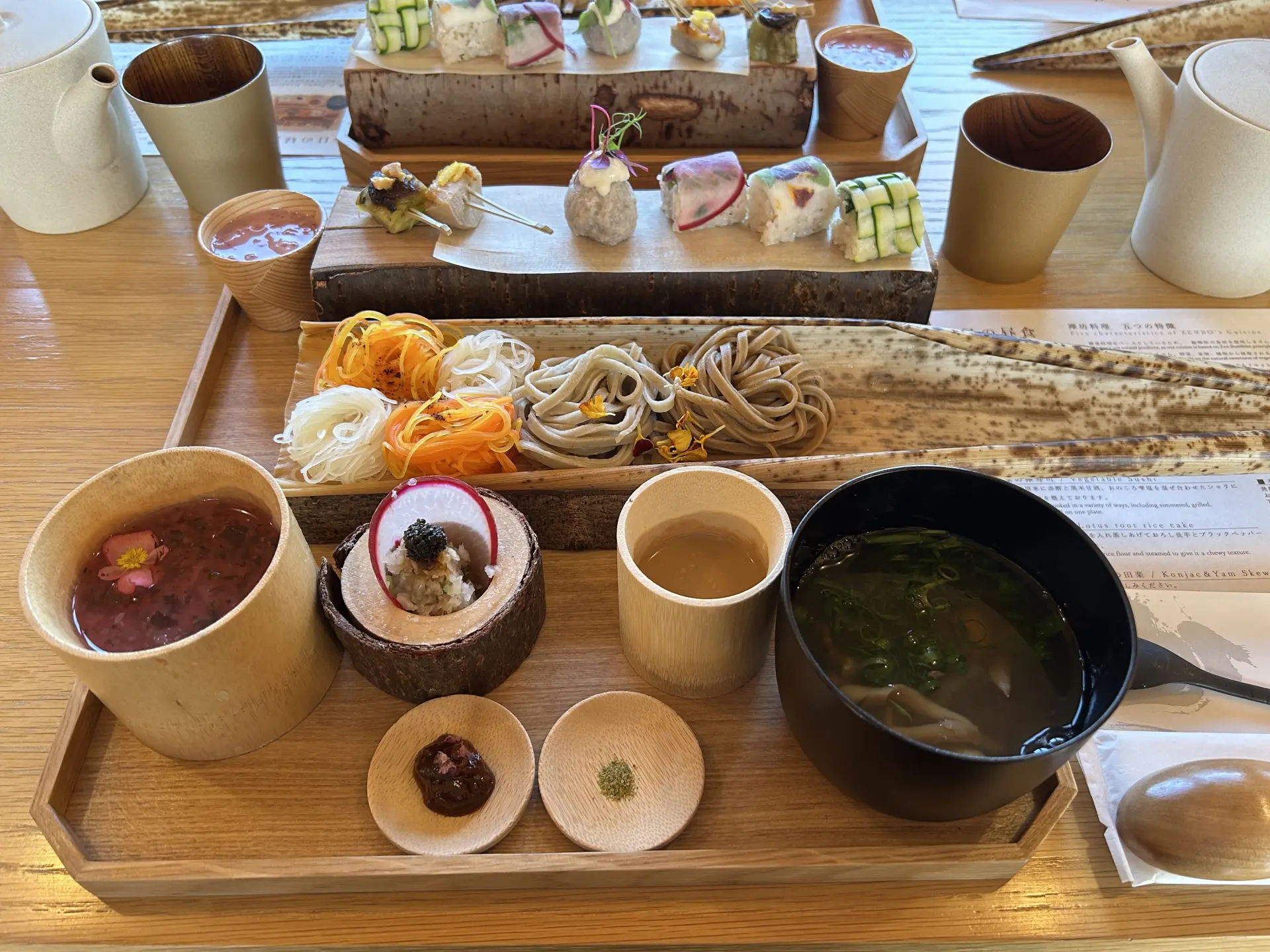
Day 3
Inoue Miso and Soy Sauce (Naruto city, Tokushima prefecture)
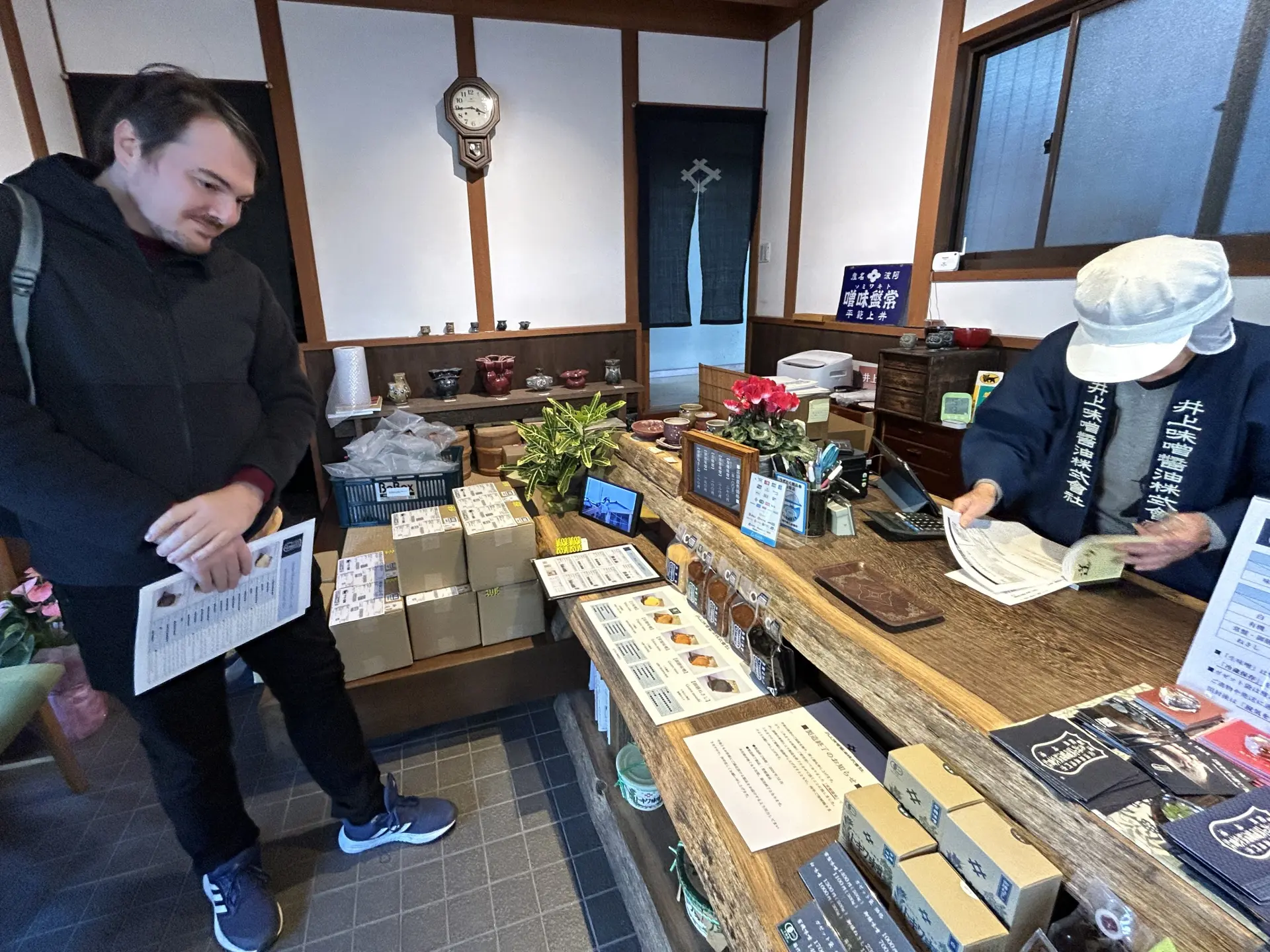
No exploration of the roots of Japanese cuisine is complete without diving into the world of miso. Whilst mass-produced varieties are common in supermarkets, the origins of this traditional ingredient are seen in community producers who even today still celebrate longstanding production methods. There is perhaps no better place to learn about the origin of this staple ingredient than by visiting Inoue Miso and Soy Sauce in Tokushima prefecture, a welcoming family-run miso brewery with a heritage dating back to 1875. Here we were treated to a behind-the-scenes look at the miso production process.
The story of this traditional business is also one of resilience and recovery in the wake of the 1995 Great Hanshin Earthquake, which impacted the traditional miso brewing structures. The rebuilding of the brewery was undertaken with great care and reverence towards traditional construction methods, with a shrine carpenter and traditional plasterer ensuring that the mud-walled structure would both honor local traditions whilst serving as the perfect facility for microorganisms necessary for miso brewing to grow, which requires precise temperature control. Within these mud walls are the brewing barrels, a key component of the unique flavor profile for each brew, also precisely crafted by specialist craftsmen for the sole purpose of this facility.
We sat down with one of the brewers and were guided through the fundamentals of miso making, observing the meticulous process of growing the koji rice mold which forms the engine of the brewing process. While the ancient process of creating miso may be unfamiliar to foreign tourists, the English material and demonstrations ensure that all attendees will be able to leave with a deeper appreciation of the craftsmanship.
We also learned that the color and distinct taste profile of miso is reflective of variables such as the length of time it has been aged, and the local traditional base ingredient, which can be either rice, soybean, or salt. One of the highlights of this tour was the tasting component, where we could try five unique styles, including one brewed in 150-year-old barrels – a chance to taste the history contained in this brewery and the long roots of miso production.
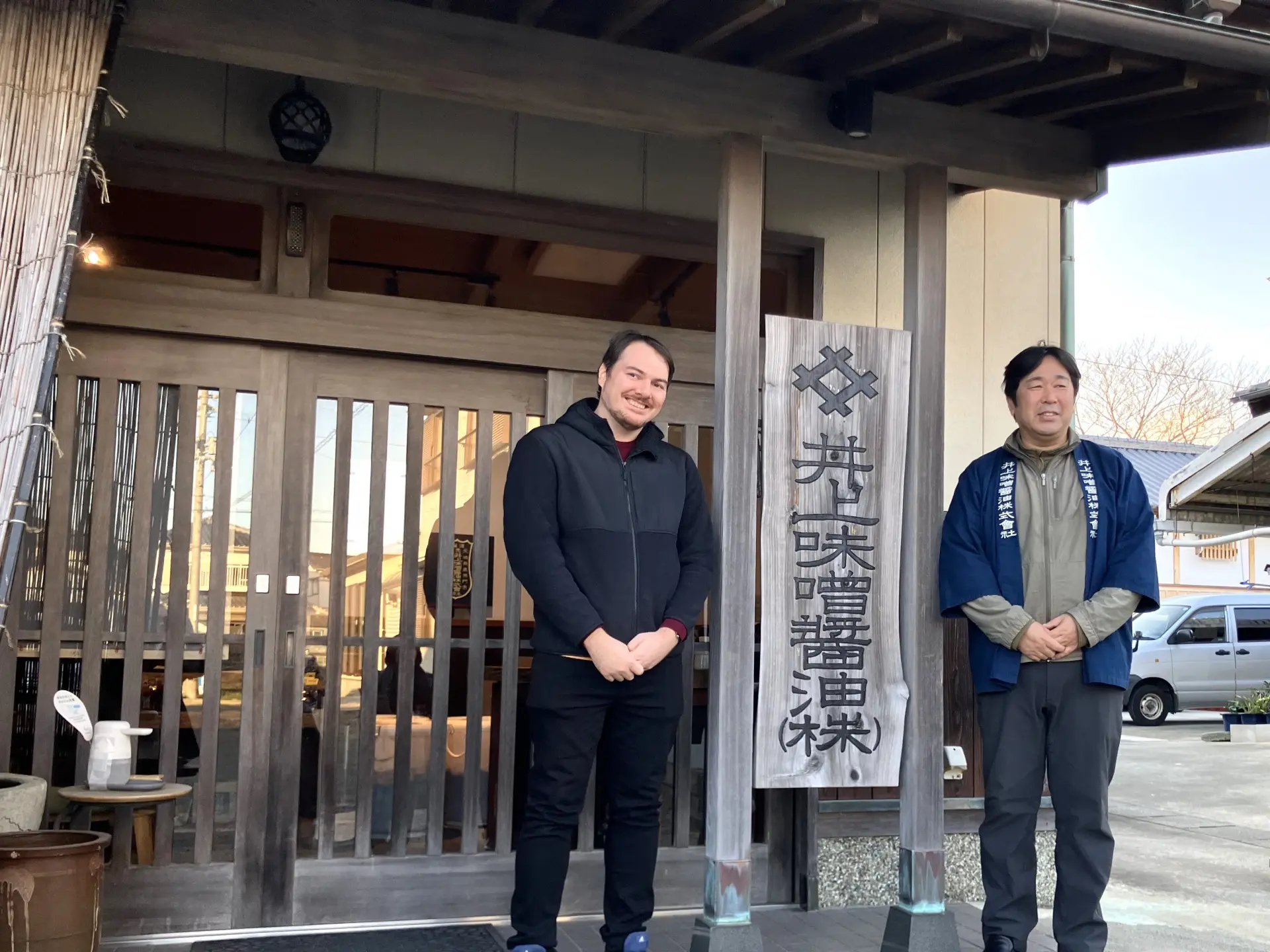
Uzushio Sightseeing Cruise (Naruto city, Tokushima prefecture)
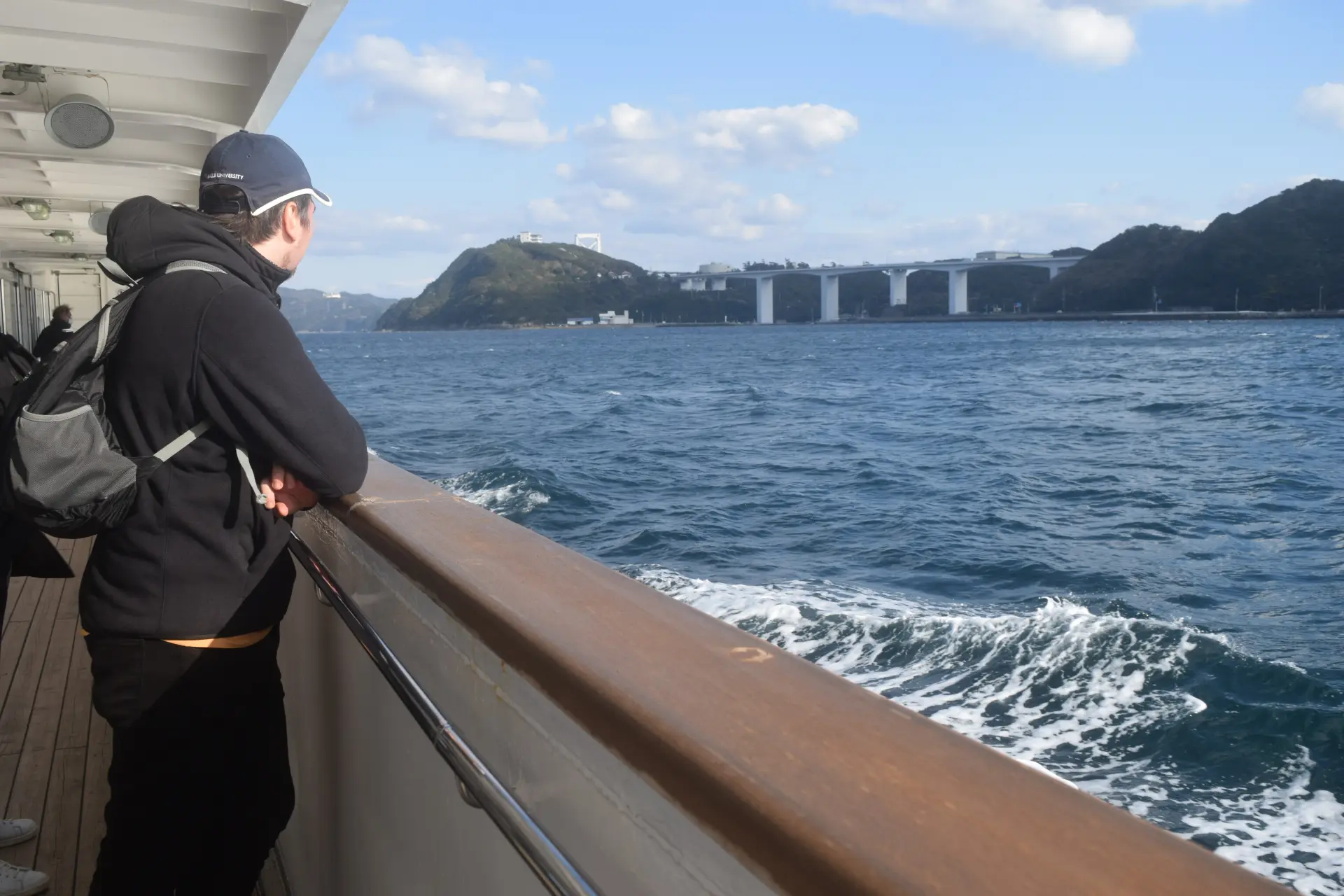
Our journey into the natural wonders unique to this region brought us to the Uzushio Sightseeing Cruise. In this 30-minute boat ride, we could see an incredible phenomenon of this area: the Naruto Whirlpools, which occur in the strait between Awaji Island (Hyogo prefecture) and Naruto (Tokushima prefecture) due to the unique flow of the currents and their temperatures. We were fortunate to attend just as the tidal divergence between these land masses was approaching its peak, ensuring that we could see this natural phenomenon at its strongest.
As we boarded the vessel, we could immediately feel the fresh sea air and its cool breeze. For those less fond of brisk temperatures, the boat features a spacious interior heated room which can warm you up as you view the beautiful Onaruto Bridge linking Honshu and Shikoku.
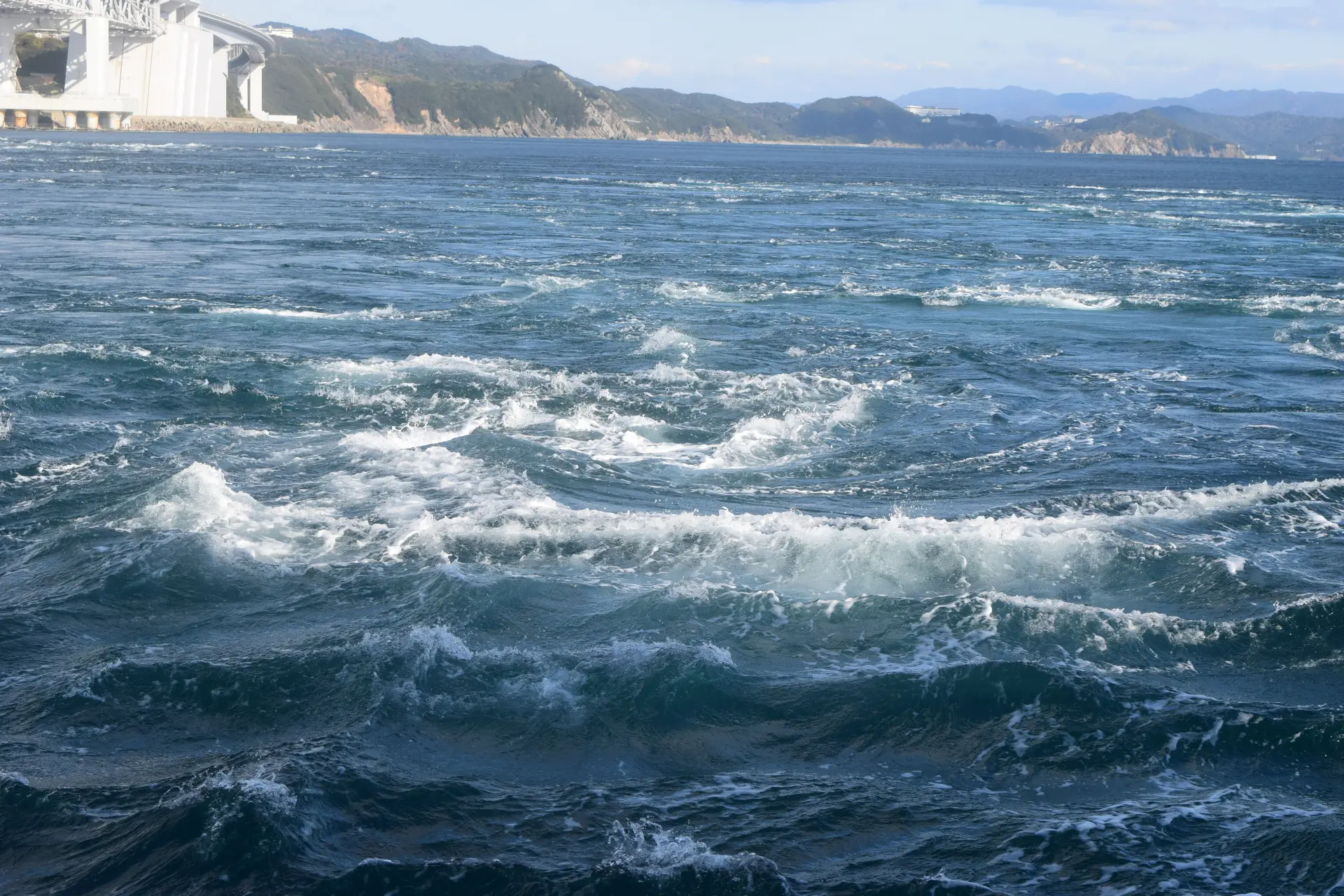
Upon our approach to the whirlpools, the staff directed us to the port side of the vessel to peer down at the waters below. We felt the power of nature while watching the water current slowed to a still before beginning to spin downwards, like water flowing down a drain hole at a huge scale. This is the visual spectacle of whirlpools; seeing them at such a close distance is a rare and valuable experience only possible in a few locations. This awe-inspiring sight served as a fantastic conclusion to our trip into the region.
Check also...

Restrictions on Large Baggage

Reviving Past Memories and Emotions! Three spots related to the Food and Fragrance of Awaji Island!!!
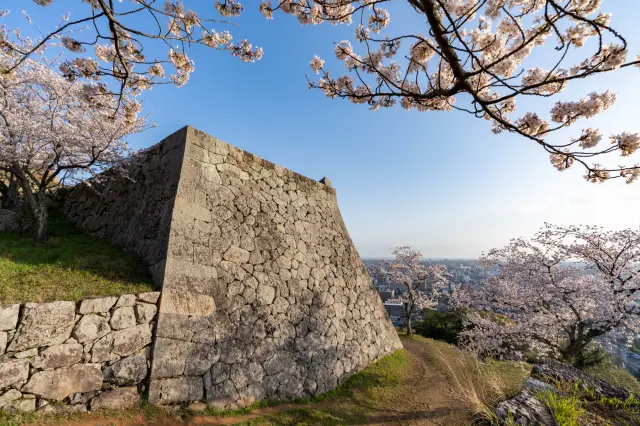
Hidden Stories in Stone: Exploring Japan’s Castle Walls
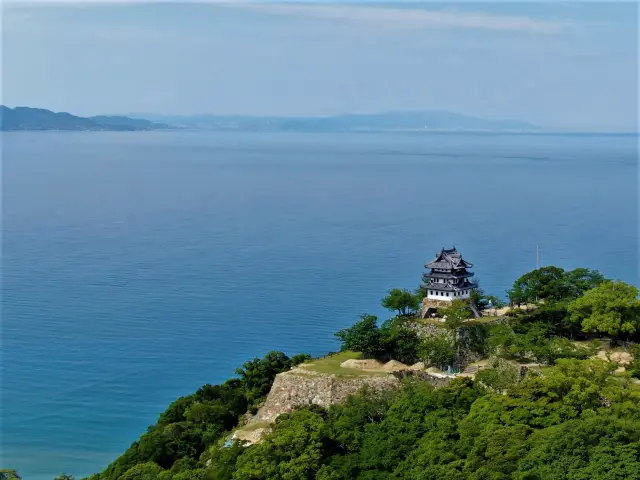
Feel Like a Lord: Castle with Stunning Panorama Views
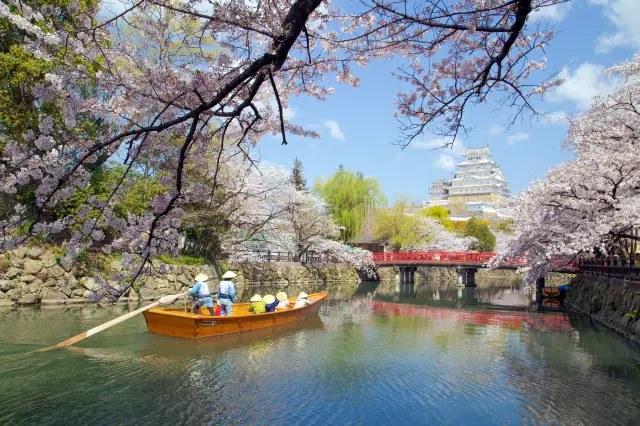
Experience the True Essence of Japan through Castles, Cultural Treasures, and Timeless Gardens
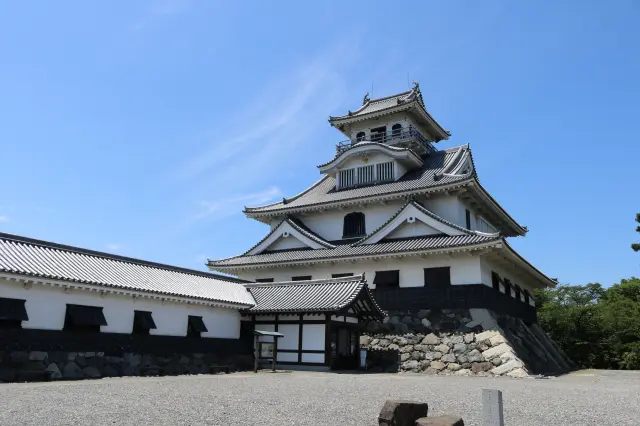
Castles of Toyotomi Hideyoshi

Exploring the Roots of Festivals: A Journey of Understanding Local Bonds and the Preservation of Culture


